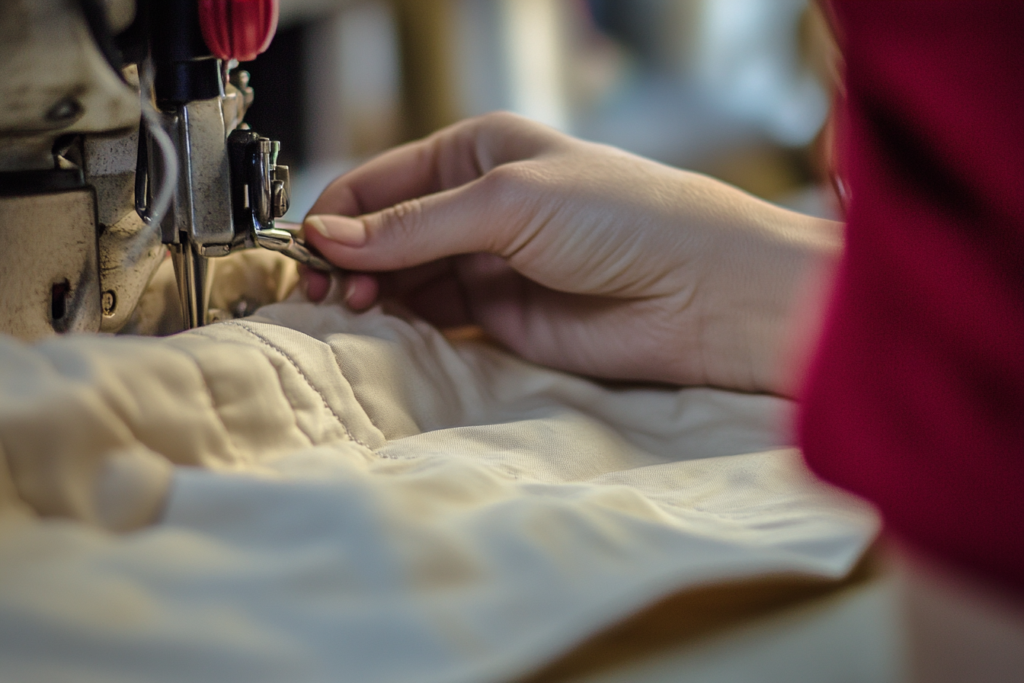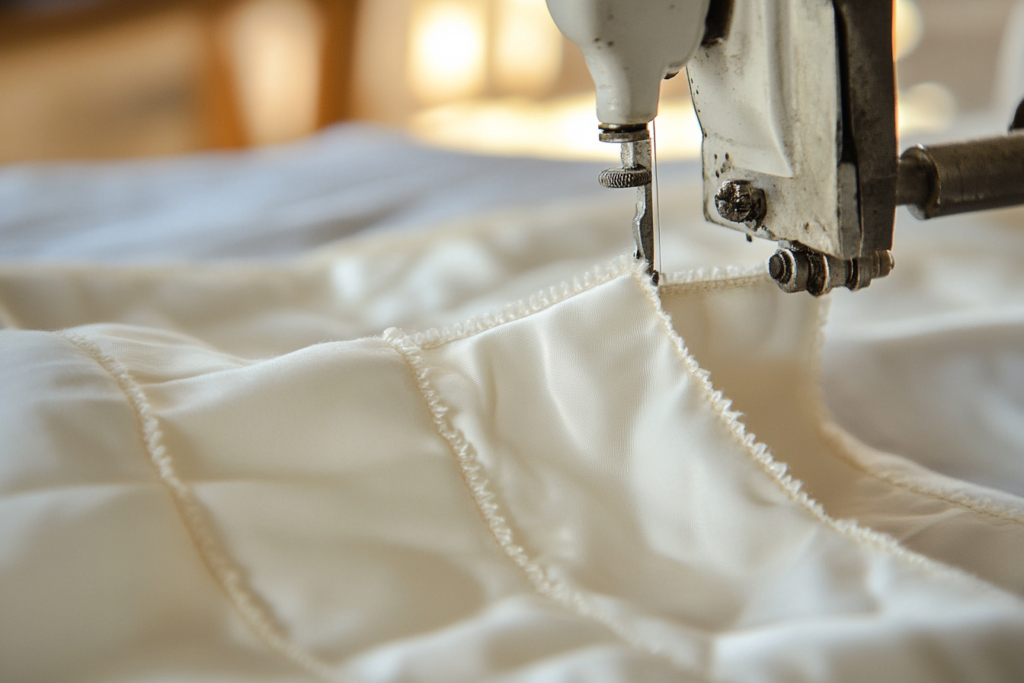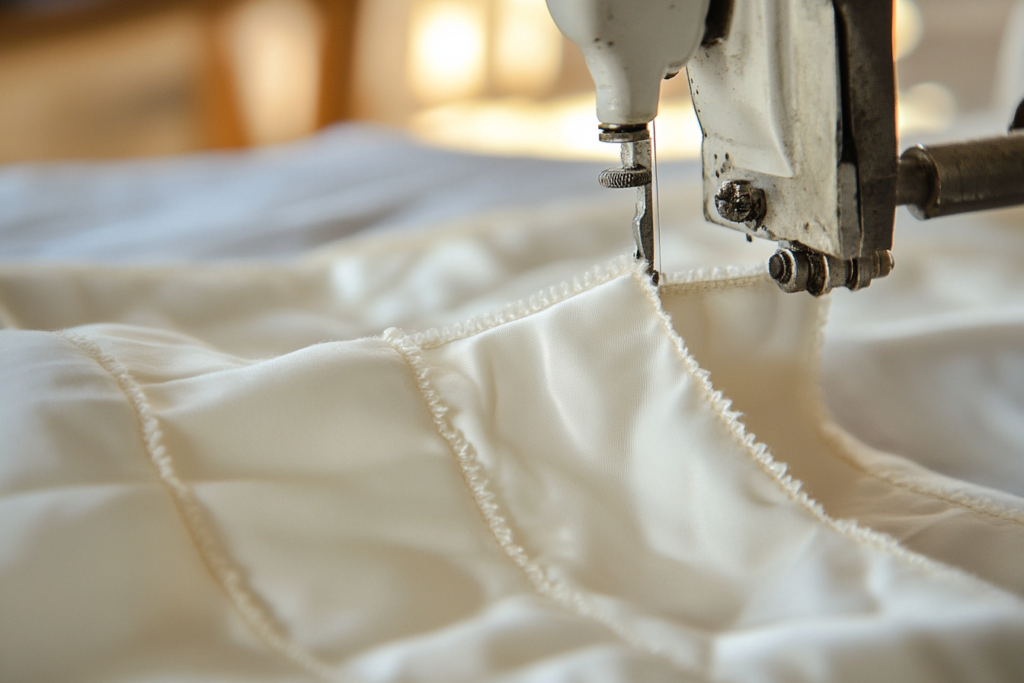Padded Hem: A Seam Finishing Technique for a Smooth, Crease-Free Look
Meta Description: A padded hem uses a soft or bias-cut hem to prevent visible creases between the seam and the garment. Learn how it enhances garment structure and finish.
What is a Padded Hem?
A padded hem is a seam finishing technique where a soft or bias-cut fabric is used to hem the seam allowance between the seam and the garment, preventing visible creases and creating a smooth, structured finish.
This technique is commonly used in luxury garments, couture fashion, and tailored pieces to ensure a professional, polished look.


Key Features of a Padded Hem
✔ Prevents Visible Creases – Helps avoid indentations or harsh seam lines.
✔ Uses a Soft or Bias-Cut Fabric – Allows flexibility and smooth draping.
✔ Creates a Structured Yet Soft Hem – Ideal for elegant, high-end garments.
✔ Common in Tailoring & Couture – Used in jackets, skirts, dresses, and coats.
✔ Enhances the Durability of Hems – Reduces friction and fabric stress.
Where is a Padded Hem Used in Fashion?
📌 Couture & Luxury Dresses – Ensures seamless draping and elegant movement.
📌 Tailored Coats & Jackets – Creates a structured but smooth hemline.
📌 Evening Gowns & Bridal Wear – Used for delicate fabrics like silk and chiffon.
📌 Formal Skirts & Trousers – Prevents bulky or visible hem lines.
📌 Vintage & High-End Clothing – Common in handmade, traditional tailoring.
Padded Hem vs. Other Hem Finishing Techniques
| Feature | Padded Hem | Blind Hem | Rolled Hem | Double-Fold Hem |
|---|---|---|---|---|
| Purpose | Prevents creases and adds structure | Invisible stitching for a clean finish | Creates a narrow, elegant hem | Simple and durable for casual wear |
| Common in | Luxury, couture, and tailored garments | Formalwear, high-end fashion | Sheer fabrics, lightweight garments | Everyday clothing, sportswear |
| Best for | Structured coats, gowns, suits | Dress pants, skirts, evening wear | Scarves, chiffon, silk dresses | T-shirts, denim, cotton dresses |
💡 Tip: A padded hem provides structure like a double-fold hem but is softer and prevents creases better than other techniques.
How to Create a Padded Hem
1️⃣ Cut Bias Tape or Soft Fabric – Use a soft, bias-cut strip of fabric to cushion the hem.
2️⃣ Attach It to the Seam Allowance – Sew the padding between the garment fabric and seam.
3️⃣ Press Lightly to Shape the Hem – Avoid harsh creases by gently pressing with steam.
4️⃣ Secure with Hand or Machine Stitching – Use a blind hem stitch for a seamless look.
💡 Tip: Using a lightweight padding material, such as silk organza or soft bias tape, ensures a refined finish without adding bulk.
Why Choose a Padded Hem?
✔ Eliminates Creases & Imprints on the Fabric – Ideal for delicate and tailored pieces.
✔ Adds Softness & Structure to Hems – Helps maintain a crisp but flexible shape.
✔ Enhances Garment Longevity – Reduces wear and tear along hem edges.
✔ Works Well with Heavy or Delicate Fabrics – Suitable for coats, gowns, and fine silk garments.
✔ Provides a High-End, Polished Look – Used in couture and high-fashion sewing techniques.
Conclusion: The Elegance of a Padded Hem in Garment Construction
The padded hem is an advanced tailoring technique that enhances the structure and appearance of high-end garments. Whether used in coats, dresses, or tailored suits, it prevents creases, softens hem edges, and ensures a polished, luxurious finish.
For designers and sewing professionals, mastering the padded hem technique is essential for achieving flawless, couture-level craftsmanship.



